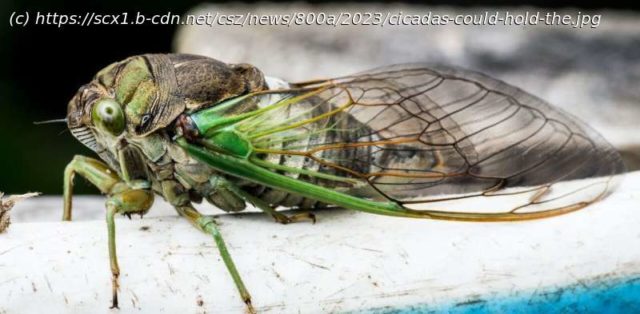Nature is inspiring scientists all the time. Some ideas are still in research, like beaver-inspired super-warm wetsuits. But others are already part of human life, like Velcro (based on burdock burrs) and the Japanese bullet train (modeled on kingfishers’ long narrow beak).
Nature is inspiring scientists all the time. Some ideas are still in research, like beaver-inspired super-warm wetsuits. But others are already part of human life, like Velcro (based on burdock burrs) and the Japanese bullet train (modeled on kingfishers’ long narrow beak).
Cicadas inspired my team’s recent research into self-cleaning surfaces.
Keeping your car windowpanes spotless can feel like a never-ending battle against the forces of dirt and dust. But insects like cicadas have a fascinating trick up their sleeves that keeps their wings spotless, without the insect putting in any effort. And it may hold the key to save us the hassle of constant cleaning.
My team’s study investigated the mechanism behind this self-cleaning process.
Thanks to the peculiar texture of cicada wings, morning dew condenses on them and gradually grows into small water droplets. These droplets remove dust particles and microorganisms as they collide with each other or roll down the insect’s wings.
Cicadas are not the only insects that have evolved self-cleaning bodies. Many butterflies have wings that can clean themselves. Other creatures like geckos and certain plant leaves, such as lotus and rice, also use droplet motion to keep themselves free from dust as cicadas do. These moving droplets also help remove bacteria, thus lowering the risk of infections.






